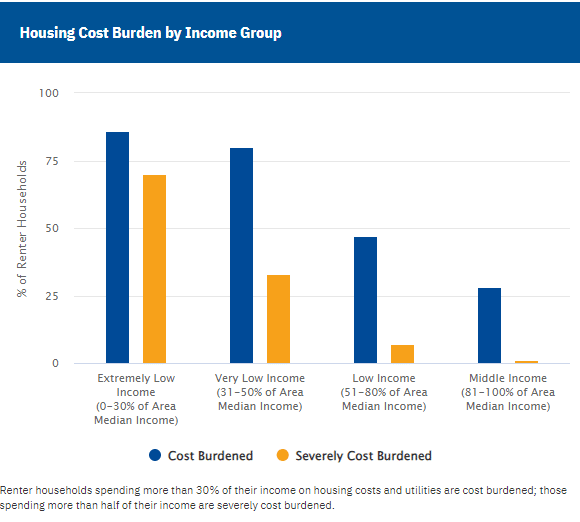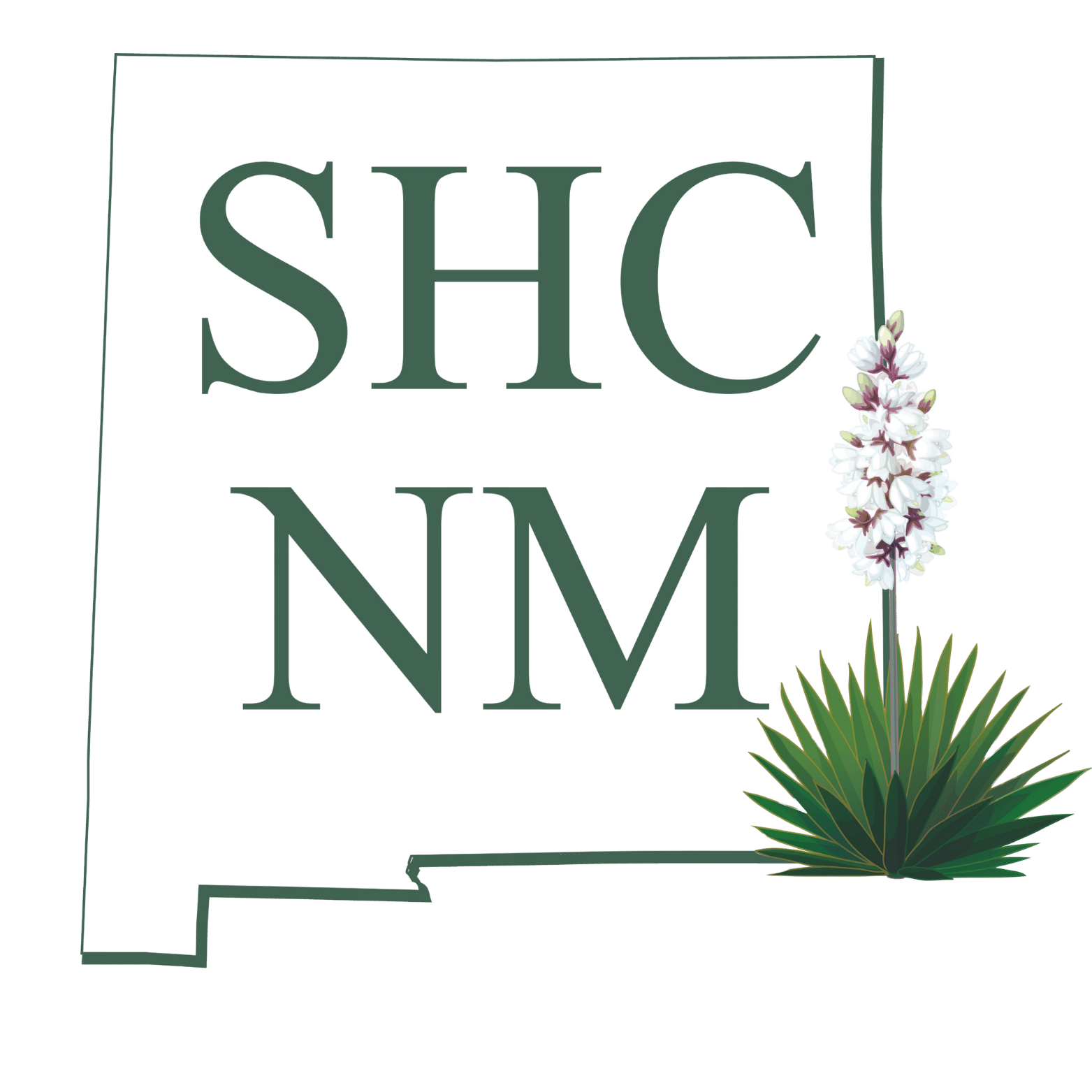Housing Needs in New Mexico
Housing Needs in New Mexico
Have you ever wondered how housing funding is allocated throughout New Mexico? Who decides where affordable housing properties are developed in state? How is housing data collected? Is homelessness really a problem in our state? As a resident of New Mexico, it is your right to be informed on how housing needs are determined and what solutions are being offered.
New Mexico Housing Needs Assessment
This report is produced annually by the New Mexico Mortgage Finance Authority and is intended to detail housing needs in the state of New Mexico. In the NM Housing Needs Assessment, you will find a compilation of statewide data to provide you with an overview of how housing options varies across different sectors, including urban vs. rural, population growth, income and poverty levels, race and age, and other economic and socio-economic indicators.
NM Needs Assessment Highlight: Cost Burden

One important metric of measuring housing needs is highlighted by the number of residents who are considered “cost burdened.” Cost Burden is when renters or homeowners pay more than 30% of their income toward housing costs. The chart makes the information clear: the lower the individual’s income, the greater the burden housing costs become. This is one of many measurables that aids the state in choosing areas to allocate funding towards developing/expanding affordable housing options such as housing vouchers.
To view the full report please visit https://housingnm.org/resources/housing-needs-assessment
Data from the National Low-Income Housing Coalition
The National Low-Income Housing Coalition provides the public with two annually produced reports intended to give an overview of how housing costs and available affordable housing options compares to the minimum wage rates in each state.
Out of Reach Report- Produced annually, the Out of Reach Report displays how much a resident must work to afford housing options based on the minimum wage rate and the market rent rate in their respective state.
To view the Out of Reach Report please visit https://nlihc.org/oor
The Gap Report- Produced annually as well, the Gap Report displays the disparities between the number of available and affordable homes in a given state in comparison to the number of cost burdened residents.
To view the Gap Report please visit https://nlihc.org/gap/state/nm
Click to enlarge. Image provided by the National Coalition to End Homelessness
*The NLIHC highlights the shortage of available and affordable housing stock in New Mexico based on average rental prices in comparison to both cost and severely cost burden households.
To view more data from the NLIHC please visit https://nlihc.org/explore-issues/publications-research/research
Point-in-Time Count
The Point-In-Time Count (PIT) is a report produced annually by the New Mexico Coalition to End Homelessness. The PIT is a physical count of people who are experiencing homelessness, either staying in shelter or living unsheltered, in a single night. The count is conducted in January by housing staff and volunteers who physically count/survey individuals experiencing homelessness. The data collected through the PIT count is used to document individuals living unsheltered, demonstrate the need for housing funding, track trends of homelessness (increases/decreases), compare demographics of individuals experiencing homelessness (race, gender, family composition, etc), and to support the need for community wide discussions, actions, and services.
PIT 2023 Results https://www.nmceh.org/_files/ugd/ad7ad8_b97469cdf6494cdd87126009b732d1db.pdf
To read more about the PIT please visit https://endhomelessness.org/resource/what-is-a-point-in-time-count/
Homeless Management Information System (HMIS)
Also managed by the New Mexico Coalition to End Homelessness, The Homeless Management Information System is used to document both housing needs and services provided to New Mexicans who are either experiencing homelessness or are at risk of homelessness. HMIS data allows providers to create reports that detail how many individuals and families are accessing shelters, utilizing HUD funded housing vouchers, as well as any overrepresentation of characteristics that may correlate with homelessness such as race, age, and disabling conditions. Furthermore, HMIS is a tool used to track services being offered and accessed in a respective community and the data is then used to inform the need for allocating federal funding towards ongoing or additional services.
The United States Census
Conducted every 10 years by the US government, the Census is mass-produced survey used to count every resident of the United States (including individuals who are unhoused or institutionalized) and to collect population demographics such as race, age, income, household size, educational level, etc. Along with determining the number of seats each state is appointed for the House of Representatives, the data derived from the census is used to determine how much federal funding is appropriated to developing, maintaining, or expanding benefit programs available to our local communities. Census data aids law makers with viewing population size in a given community and, more specifically, how many of those households live in rural vs urban areas, are above or below the poverty line, rent vs. own their homes, are experiencing unemployed, have health insurance, etc. Together, these characteristics inform the need for, and allocation of, federal funding for programs such as SNAP, WIC, Medicaid, TANF, Housing Voucher Programs, LIHEAP, and much more! Furthermore, Census Data is also used to determine funding for the development, maintenance, and expansion of our communities’ infrastructure, such as bridges, roads, schools, parks, public transit, and public housing.
To read more about the Census please visit https://www.census.gov/about/what.html
To view the list of federally funded programs affected by Census please visit https://www2.census.gov/programs-surveys/decennial/2020/program-management/working-papers/Uses-of-Census-Bureau-Data-in-Federal-Funds-Distribution.pdf
“I am thankful you have crossed my path, you are a very kind passionate person. You have made me want to push harder in my life sharing your story I believe that you are proof that no matter what I go through in my trials you made me realize yes, its hard time, but to have the spirit you have, I want that free spirit as well!”
-Family Voucher Participant to a SHCNM Staff Member



